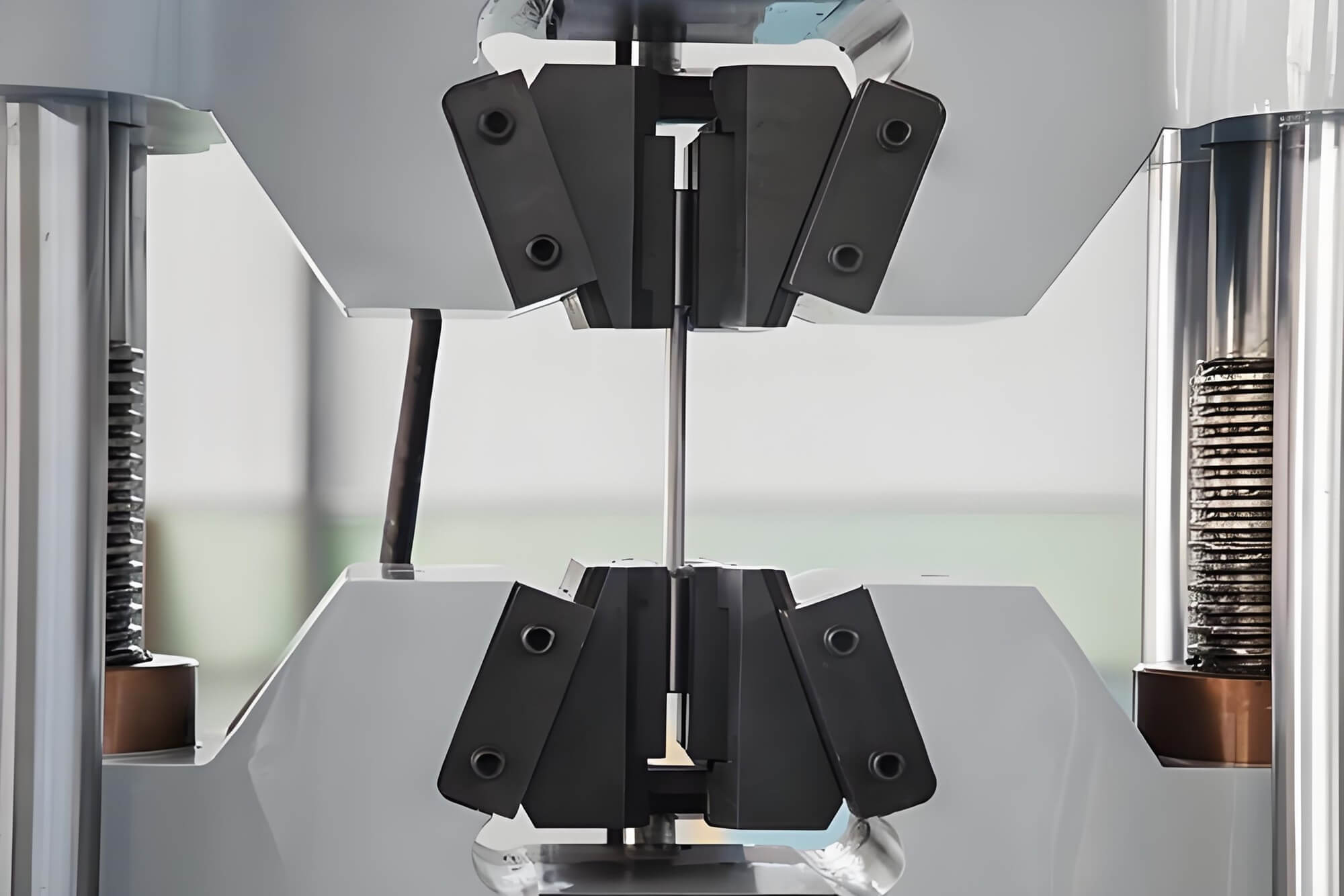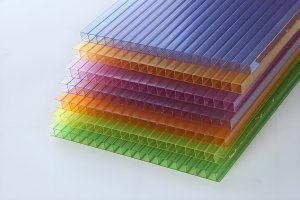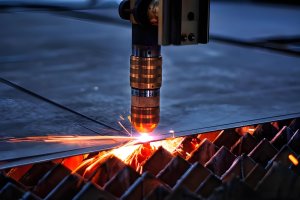In the intricate world of CNC machining, the yield strength of steel stands as a cornerstone metric that shapes the performance, reliability, and cost-effectiveness of precision-engineered components. As an engineer with over a decade of experience in designing and machining high-performance parts, I’ve seen firsthand how this critical property influences every decision—from material selection to the final cut on a CNC machining center. The yield strength of steel not only dictates a part’s ability to withstand real-world stresses but also defines the strategies and costs involved in its production. For engineers, designers, and procurement managers, mastering this property unlocks the potential for robust designs and efficient manufacturing. In this article, I’ll explore the principles of yield strength, its profound impact on CNC machining, share personal insights from the shop floor, and outline advanced techniques to optimize high-strength steels, all while weaving in practical lessons learned from years in the field.
Decoding the Yield Strength of Steel: A Personal Perspective
As someone who’s spent countless hours analyzing material specs and tweaking CNC machining programs, I can attest that the yield strength of steel is the number that keeps engineers up at night. It’s the line between a part that performs flawlessly and one that fails under load.
Elasticity Meets Reality
The yield strength of steel, denoted as SYS_YSYS_YSY or σY\sigma_YsigmaY, represents the maximum stress a steel can endure before it deforms permanently. Picture a steel beam in a bridge: it flexes under the weight of traffic, returning to its original shape when the load is gone—this is elastic deformation. But push it beyond the yield strength of steel, and it warps irreversibly, compromising safety. Early in my career, I worked on a project involving suspension components. We chose a steel with a yield strength of 350 MPa, assuming it was sufficient. Under testing, the parts deformed slightly, teaching me the importance of factoring in real-world stresses and safety margins.
Yield Strength vs. Tensile Strength: A Lesson from Failure
Unlike ultimate tensile strength (UTS), which marks the point of fracture, the yield strength of steel is the practical limit for most designs. A bent crankshaft may not break, but it’s useless if it’s permanently twisted. I recall a project where a client insisted on prioritizing UTS for a high-load gear. We prototyped it, only to find it deformed under operational stress because we underestimated the yield strength. That experience cemented my reliance on yield strength as the primary design constraint, always paired with a generous safety factor.
The Stress-Strain Curve: A Blueprint for Precision
The stress-strain curve is like a roadmap for understanding steel’s behavior. It shows the elastic limit and the point where plastic deformation begins. For steels without a clear yield point, we use the 0.2% offset method to define the yield strength of steel—the stress causing a 0.2% permanent strain. I’ve spent hours in the lab analyzing these curves, tweaking designs to ensure components stay within the elastic zone, a practice that’s saved countless projects from costly redesigns.
How Yield Strength Shapes CNC Machining
The yield strength of steel ripples through every aspect of CNC machining, from material choice to the hum of the spindle. Over the years, I’ve learned that what looks perfect on a CAD model can turn into a nightmare on the shop floor if yield strength isn’t carefully considered.
Material Selection: Balancing Strength and Cost
Choosing a steel with high yield strength ensures durability but complicates CNC machining. High-strength steels demand robust machines, specialized tools, and longer cycle times, driving up costs. I once worked on a project requiring 4340 alloy steel with a yield strength of 470 MPa. The parts were flawless in service, but the machining process was a slog—tool wear was relentless, and cycle times doubled compared to milder steels. That taught me to weigh performance against production realities early in the design phase.
The Physics of the Cut: Where Theory Meets Practice
CNC machining is a dance of controlled deformation, where the cutting tool overcomes the yield strength of steel to shear off chips. Higher yield strength means higher cutting forces, which stress machines, cause deflections, and trigger vibrations (chatter). I vividly recall machining a batch of high-strength tool steel parts. The chatter was so severe it ruined the surface finish, forcing us to rethink our fixturing. Robust workholding and slower speeds saved the day, but it was a costly lesson in respecting material properties.
Machinability: The Hidden Cost of Strength
Machinability is inversely tied to the yield strength of steel. High-strength steels wear tools faster, generate excessive heat, and produce stringy chips that can clog machines. Early in my career, I underestimated the work-hardening of 304 stainless steel. The material toughened as we machined, dulling tools and spiking costs. Since then, I’ve prioritized sharp tools and aggressive cooling to tame these challenges.
A Shop-Floor Comparison of Common Steels
Different steels offer unique balances of yield strength and machinability, each with its place in CNC machining. Here’s a breakdown based on my experience:
| Material | Yield Strength (MPa) | Tensile Strength (MPa) | Hardness | *Machinability (%) | Key Considerations & Applications |
| A36 Steel | ~250 | 400-550 | ~112 HB | ~72% | Easy to machine, prone to gummy chips. Ideal for structural frames, brackets, and fixtures. |
| 4140 Alloy Steel | ~415 | ~655 | ~197 HB | ~66% | Versatile, heat-treatable. Used for gears, shafts, and tooling. Requires rigid setups. |
| 304 Stainless Steel | ~241 | 520-586 | ~195 HB | ~45% | Work-hardens, traps heat. Perfect for medical, marine, and food-grade parts. |
| D2 Tool Steel | ~420 | 758-860 | ~220-255 HB | ~27% | Abrasive, tool-killer. Suited for dies, punches, and high-wear tools. |
Personal Insight: A36 is a dream for quick jobs, but its softness can lead to messy chips that jam machines. Conversely, D2 tool steel is a beast—machining it feels like cutting concrete. I once spent a week optimizing a CNC machining setup for D2, only to realize ceramic tools were the game-changer we needed.
Advanced Strategies for Machining High-Yield-Strength Steels
Mastering high-strength steels in CNC machining demands a systems approach, blending cutting-edge tools, cooling, and programming. Here are strategies I’ve honed over years on the shop floor.
Cutting Tool Innovations
High-strength steels punish tools, so I rely on carbide, ceramic, or CBN tools with coatings like TiAlN to combat the yield strength of steel. Sharp edges and polished flutes reduce friction and clear chips efficiently. I once switched to CBN tools for a D2 project, cutting tool replacement costs by 30% and boosting throughput.
Coolant: Winning the Heat War
Heat is the enemy when machining high-strength steels. High-pressure coolant (HPC) systems, delivering fluid at over 1,000 psi, break chips and cool the cutting zone. Through-spindle coolant has been a lifesaver for deep-hole drilling in 4140 steel, preventing tool burnout and maintaining tolerances.
Smart Toolpaths: Efficiency Meets Precision
Modern CAM software has revolutionized CNC machining with toolpaths like trochoidal milling, which uses circular “peeling” motions to maintain low tool loads. I’ve used adaptive clearing to machine hardened steels 40% faster than traditional methods, preserving tool life and surface quality.
Heat Treatment: The Alchemist’s Edge
Heat treatment lets us manipulate the yield strength of steel for machining ease and final performance. Annealing softens steels like 4140, making them machinable, followed by quenching and tempering for strength. I once machined a batch of 4340 gears in their annealed state, then heat-treated them to 900 MPa yield strength—perfect for high-torque applications.
A Real-World Story: Overcoming Yield Strength Challenges
Last year, a client approached me through want.net, a platform connecting manufacturers with precision machining services, to produce a set of high-strength 4340 steel shafts for heavy machinery. The specs demanded a yield strength of 470 MPa post-treatment, but machining in the hardened state was impractical. Drawing on experience, we annealed the steel to lower its yield strength to ~300 MPa, machined the intricate features using CNC machining with CBN tools, and then heat-treated the parts to meet the final strength requirements. The result? Flawless shafts delivered on time, with a 20% cost saving compared to the client’s previous supplier. This project, sourced via want.net, underscored the power of aligning material properties with machining strategies.
Emerging Trends: The Future of Steel in CNC Machining
Looking ahead, innovations are reshaping how we handle the yield strength of steel in CNC machining. New ultra-high-strength steels, like maraging alloys, offer yield strengths exceeding 1,500 MPa with better machinability than traditional tool steels. AI-driven CAM systems are also optimizing toolpaths in real-time, reducing cycle times for high-strength materials. In my shop, we’re experimenting with hybrid CNC machining systems that integrate additive manufacturing, allowing us to build complex geometries in softer states before hardening. These advancements promise to make high-strength steel machining more efficient and accessible.
Conclusion: Turning Yield Strength into Opportunity
The yield strength of steel is more than a number—it’s the bridge between design vision and manufacturing reality. From my years on the shop floor, I’ve learned that mastering this property requires a blend of science, strategy, and hands-on problem-solving. By leveraging advanced tooling, high-pressure cooling, smart toolpaths, and heat treatment, we can transform the challenges of high-strength steels into opportunities for precision and profitability. Whether you’re designing gears or structural components, understanding the yield strength of steel is your key to success in CNC machining. Ready to tackle your next project? Explore precision machining solutions at [want.net] to bring your high-strength steel designs to life.
FAQ:
1. What is the yield strength of steel, and why is it important in CNC machining?
The yield strength of steel is the maximum stress a steel can withstand before it deforms permanently. In CNC machining, it’s critical because it determines how resistant the material is to cutting, impacting tool wear, machining forces, and part durability. Choosing a steel with the right yield strength ensures the part performs reliably while balancing production costs.
2. How does the yield strength of steel affect CNC machining costs?
Steels with higher yield strength are harder to machine, requiring robust CNC machining equipment, specialized tools (e.g., carbide or CBN), and longer cycle times. This increases tool wear and energy costs. For example, machining D2 tool steel (yield strength 420 MPa) can double tool costs compared to A36 steel (250 MPa).
3. What challenges arise when machining high-yield-strength steels?
High yield strength of steel leads to increased cutting forces, tool deflection, and vibration (chatter), which can compromise precision and surface finish. These steels also cause faster tool wear and generate heat, necessitating advanced cooling systems and robust fixturing in CNC machining.
4. How can I optimize CNC machining for high-strength steels?
To machine high-strength steels effectively:
- Use advanced tools like carbide or CBN with TiAlN coatings.
- Employ high-pressure coolant (>1,000 psi) to manage heat.
- Implement trochoidal milling for lower tool loads.
- Anneal the steel before CNC machining to reduce yield strength, then heat-treat for final strength.
5. Which steel grades are best for CNC machining, considering yield strength?
- A36 Steel (~250 MPa): Easy to machine, ideal for structural parts.
- 4140 Alloy Steel (~415 MPa): Versatile, heat-treatable for gears and shafts.
- 304 Stainless Steel (~241 MPa): Challenging due to work hardening, suited for medical or marine parts.
- D2 Tool Steel (~420 MPa): Difficult to machine, used for high-wear tools.
Each grade’s yield strength of steel affects machinability and application.
6. How does heat treatment impact the yield strength of steel in CNC machining?
Heat treatment, like annealing, lowers the yield strength of steel for easier CNC machining, while quenching and tempering increase it for final part strength. For example, 4140 steel can be annealed to ~300 MPa for machining, then heat-treated to ~900 MPa for performance.
7. Why does 304 stainless steel pose machining challenges despite its lower yield strength?
Despite a yield strength of steel around 241 MPa, 304 stainless steel work-hardens during CNC machining, increasing its hardness mid-process. Its low thermal conductivity also traps heat, accelerating tool wear and requiring sharp tools and aggressive cooling.
Reference:
https://en.wikipedia.org/wiki/Yield_(engineering)
https://www.vedantu.com/physics/yield-strength
https://www.youtube.com/watch?v=aMXDwg6x1aY
Other Articles You Might Enjoy
- Precision CNC Machining of Stainless Steel: Innovations and Best Practices in Aerospace Machining
Introduction: Precision CNC Machining and the Use of Stainless Steel Precision Computer Numerical Control (CNC) machining, a vital technology within the manufacturing industry, uses pre-programmed software to guide machinery towards…
- How Does CNC Machining Achieve Precision Tolerances in Stainless Steel Parts?
The Importance of Precision Tolerances in Stainless Steel Parts Precision tolerances are the allowable limits of variation in a physical dimension. In CNC machining, particularly for stainless steel parts, achieving…
- Conquering High-Strength and Ultra-High-Strength Steel in CNC Machining Precision and Techniques Revealed
High-strength and ultra-high-strength steels (HSS and UHSS) are engineering marvels, known for their exceptional combination of strength and toughness. These steels are crucial in industries such as aerospace, automotive, and…
- Stainless Steel Machining for Aerospace: Precision and Challenges in CNC Operations?
Introduction: Brief Overview of CNC Machining and Its Importance in the Aerospace Industry Computer Numerical Control (CNC) machining is a modern manufacturing process using pre-programmed computer software to control movement…
- How to Choose a CNC Company for Precision Stainless Steel Flange Machining?
Selecting the right CNC machining company is crucial for achieving high-quality, precision stainless steel flanges. This detailed guide explores the essential factors to consider in this decision-making process, ensuring that…
- How to Evaluate the Strength of Precision CNC Machining Companies in Steel Shaft Production?
The Technical Challenges in Precision CNC Machining of Steel Shafts Precision CNC machining of steel shafts involves several technical challenges that need to be understood to evaluate a company's capabilities…






